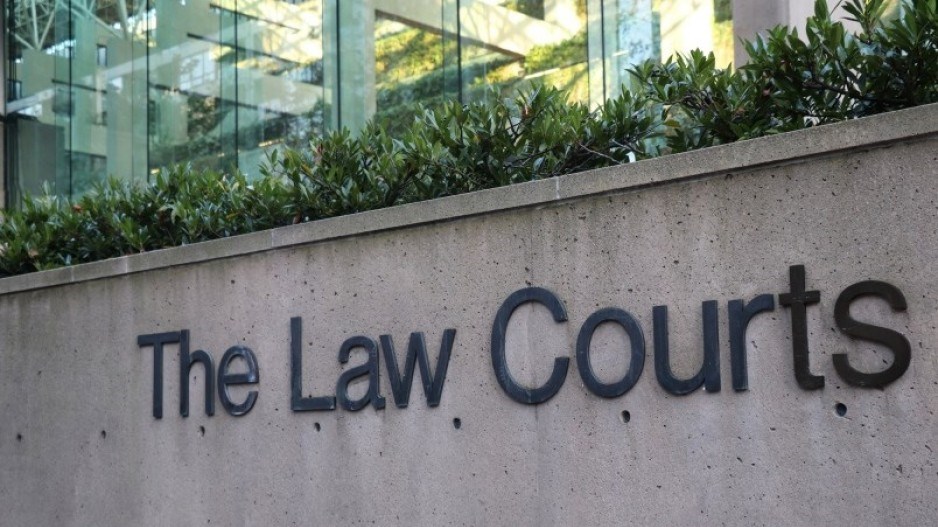A lawyer for the Vanier Park neighbours that are contesting the City of Vancouver’s agreement to service the Senakw towers argued Tuesday that the previous city council held illegal meetings behind closed doors.
“At a certain point of discussions, in the negotiations, what we'll see is the city was actually required under the legislation to be in public meeting, it couldn't be a closed meeting,” Nathalie Baker, who represents the Kits Point Residents Association (KPRA), said in B.C. Supreme Court at the start of a four-day hearing.
“Under the Vancouver Charter, only preliminary negotiations and discussions relating to proposed works and services are allowed to be held in camera. The city, however, held everything, from the preliminary negotiations all the way to final execution, in closed sessions with no public consultation or just even public oversight.”
KPRA and two of its directors filed last October for a judicial review. They want a judge to quash the 120-year agreement to service the cluster of residential towers to be built on the Squamish Nation reserve around the Burrard Street Bridge’s south side, because the city made the deal behind closed doors and didn’t give citizens a say.
The city maintains it acted properly under both the Indian Self-government Enabling Act and the Vancouver Charter and will argue that council has authority to pass resolutions behind closed doors.
Baker said in-camera meetings are properly held for preliminary discussions of matters like land disposals and acquisitions and labour relations. In this case, she argued that the city breached its duty of fairness owed to the residents and acted in bad faith.
“The city remains a creature of statute, and its powers are neither restricted nor expanded based on the city's goals and objectives, no matter how worthy they may be, whether it be reconciliation or anything else,” Baker said.
Baker told Justice Carla Forth that her clients do not dispute the Squamish Nation’s right to build on its reserve land, or its exemption from city rules and regulations. However, they argue they were not consulted on a development they say is out of context with the surrounding neighbourhood and would not normally be permitted under the city’s bylaws.
Baker called the services agreement a misnomer, because it is much more than connecting to civic utilities.
“For the nation to build at its desired scale and density, 11 towers on 10 acres, it actually needed, required the city to not only allow the nation to connect to the city services, but to do things like expropriate land to build those services, and to give up parts of Vanier Park so that the nation could build something it otherwise could not build on its own land,” Baker said. “Not because it doesn't have the money — it’s a sophisticated, powerful band, they partnered with a very powerful developer — but because the development is so dense.”
Baker said that there was nothing prohibiting the city from consulting with citizens, and that reconciliation does not mean that “local governments must cede to every single request, no matter the consequences, or the impacts on the residents and municipalities.”
The federally approved project is a partnership between the Squamish Nation’s Nch’kay Development Corp. and Westbank Projects Corp.
Last May 25, then-mayor Kennedy Stewart and Squamish Nation council chair Khelsilem signed the agreement at an on-site photo op.
A day earlier, the city and Squamish Nation law firm McCarthy Tetrault agreed to keep the document confidential until at least June 3 while it underwent further review and negotiation. The city’s court filings said negotiations on final terms continued until July 19. The agreement was added to the city website on the eve of B.C. Day long weekend. No public announcement was made.
The 250-page agreement spells out how Senakw will connect to the city’s water and storm sewers, sidewalks, roads, bike lanes and public transit, and who pays for what. An appendix lists $48.43 million of costs estimated for 15 street, bike lane, sewer and seawall projects, mostly paid for by Squamish Nation. Of that, $15 million is the estimate to build a transit hub on the Burrard Street Bridge.
Westbank began work last summer on the first phase of an envisioned four-phase complex. Prime Minister Justin Trudeau announced at the Sept. 6 groundbreaking ceremony a $1.4 billion loan through Canada Mortgage and Housing Corp. to finance half the units in the first two phases.
Before Squamish Nation members voted in 2019 in favour of the 50-50 partnership with Westbank, they received an expert report that estimated the project could generate as much as $12.7 billion in cashflow for the band and developer.
In 1913, the province removed Kitsilano reserve inhabitants by barge, after offering the 20 family heads $11,250 each, contrary to the Indian Act. Eighty-seven years later, in 2000, Squamish Nation ceded 60 acres of Kitsilano Point to the federal government in a $92.5 million land claims settlement.
Five B.C. Court of Appeal judges unanimously agreed in 2002 to return to Squamish Nation 10.5 acres of land that had been expropriated for the Canadian Pacific Railway in 1886 and 1902.

